Successful field experiment of high-precision 76 GHz foreign object debris detection radar for regional 910 m runway
► Download this report as PDF.
The International Center for Air Navigation Systems launched and successfully conducted full-scale tests of a high-precision foreign object detection system based on mm-wave technology (FOD radar). The experiment was conducted in March 2020 at a test airfield for bush light-engine aviation.
This field trial experiment was done as Proof of Concept (PoC) verifying that circuitry and design of the 76 GHz radar work exactly how it was invented. The radar will be further tested there to get it prepared for certification according to FAA requirements.
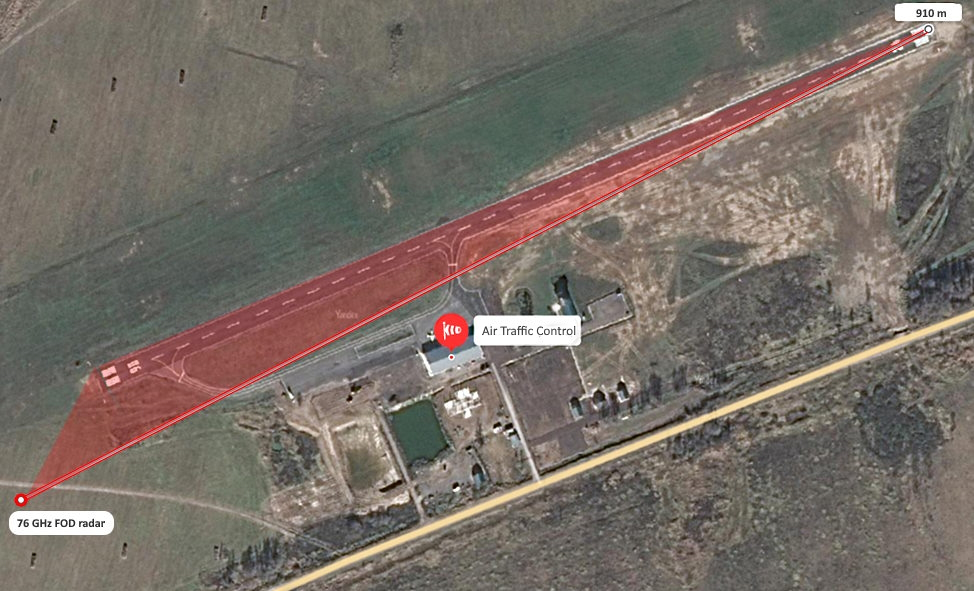
Map of the airfield with FOD radar installed
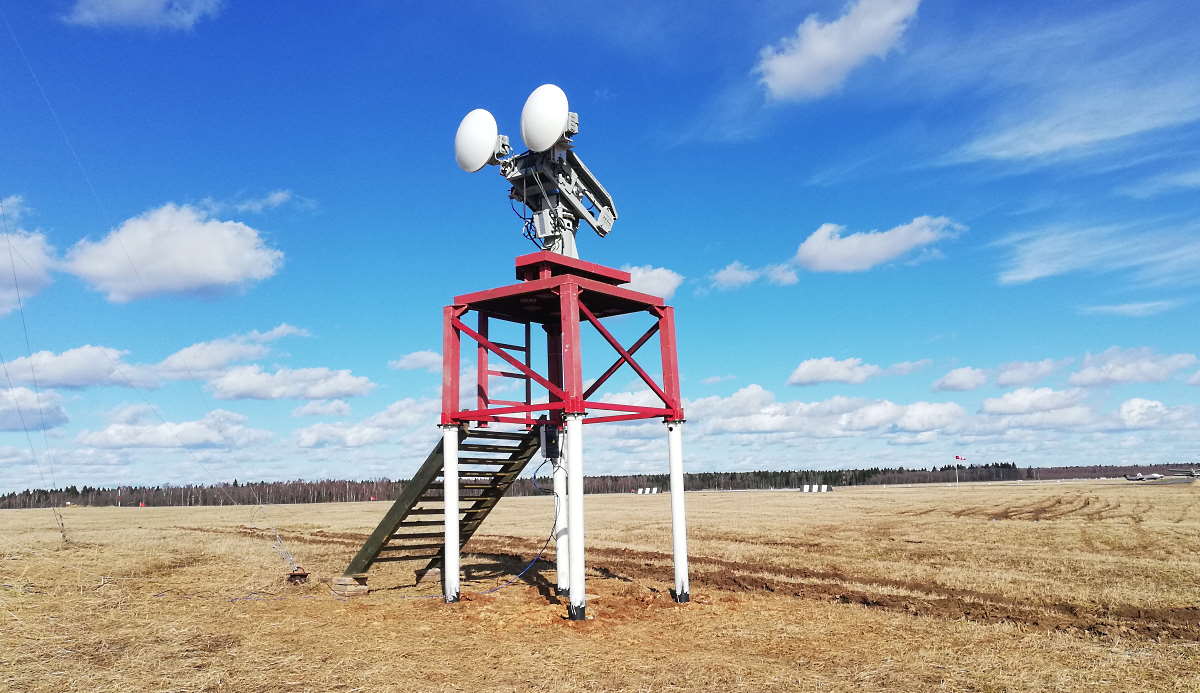
76 GHz FOD radar installed on tower
FAA defines FOD as “Any object located in an inappropriate location in the airport environment that has the capacity to injure airport or airline personnel and damage aircraft, which can cause damage to aircraft as well as injury airport employees.” The direct costs of FOD incurred the global aviation industry $1.2+ billion annually mainly due replacement of damaged aircraft tires (up to $5K each), but indirect costs (e.g., flight delays, runway closure) are much bigger reaching $13 billion annually.
FOD radar installation at the test airfield was done in February, 2020. During March, 2020 the field trial experiment was performed at runway to show availability of detecting 1.2 in. (3.1 cm) high and 1.5 in. (3.8 cm) in diameter at ranges of up to 0.59 mile (910 m). FOD radar was installed on 11.5 ft (3.6 m) frame basement and located 130 ft (40.0 m) from the runway center line. The max line of sight distance from antennas to far end of the runway was 0.57 mile (910 m).
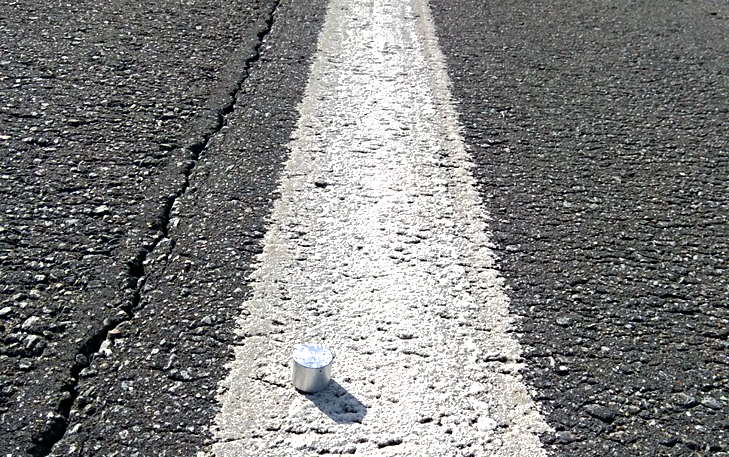
Metallic cylindrical target Ø3.8 cm and 3.1 cm high on the runway
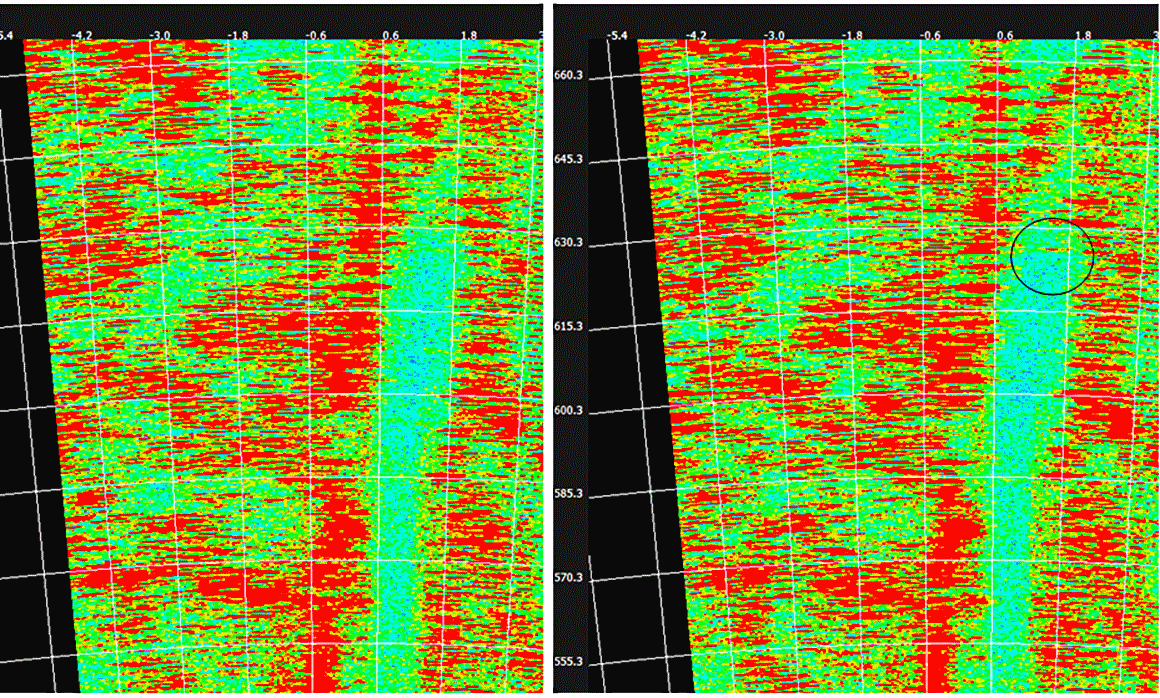
Radar screen with target Ø3.8 cm and 3.1 cm (left – empty runway, right – with FOD target)
Due to the concave runway profile at the far end of the runway, direct visibility by the radar beam was available up to a length of 0.4 mile (650 m) only. The remainder of the runway length fell into the “blind zone”. It was not possible to change the radar installation point, so max registered range of FOD radar at the runway was limited to 0.4 mile (650 m).
During the experiment on the runway, metallic cylindrical target Ø3.8 cm and 3.1 cm high was successfully detected on 0.4 mile (650 m) distance.
To confirm the max radar range of 0.62 mile (1,000 m) according to radar specification, the auxiliary field trial experiment was performed. The direct flat stretch of local road with 0.62 mile (1000 m) was chosen, and radar was delivered there on a truck. At this auxiliary field trial experiment, metallic cylindrical target Ø3.8 cm and 3.1 cm high was successfully detected on 0.62 mile (1,000 m) distance.
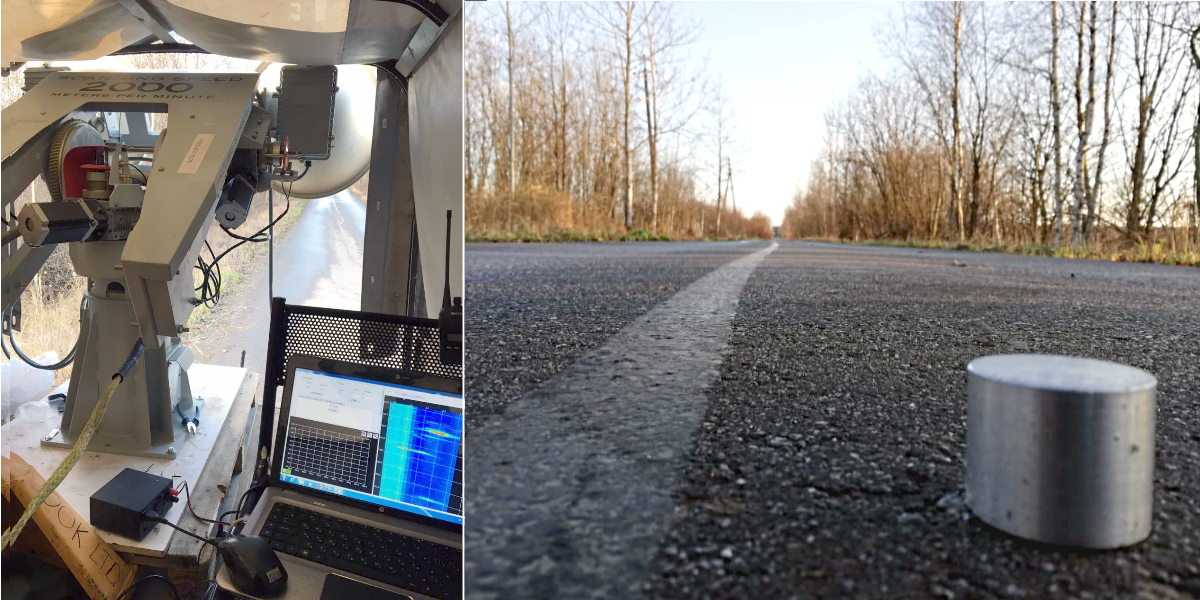
Auxiliary experiment for detecting metallic cylindrical target Ø3.8 cm and 3.1 cm high on 0.62 mile (1,000 m)
In addition to FAA-recommended reference cylinder Ø3.8 cm and 3.1 cm high, the field experiment was included a demonstration of the detection of a set of 10 different non-calibrated targets scattered on the runway at distances from 0.16 to 0.4 mile (250 m to 650 m), counting from near to radar runway side. These items included two wrenches, water and alcohol bottles, metallic cans, coil with wires, ribbon bird.
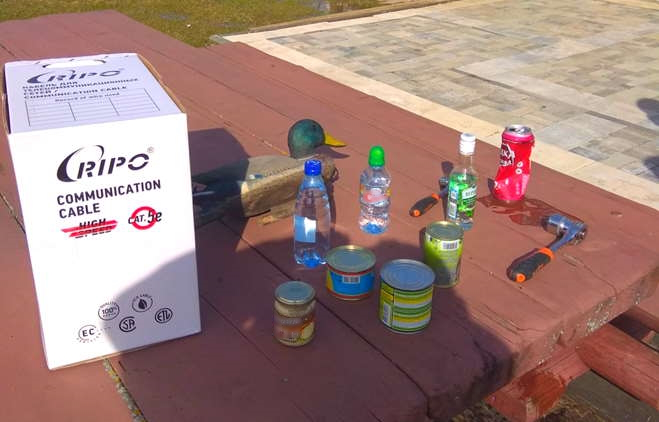
Set of 10 different non-calibrated foreign debris targets
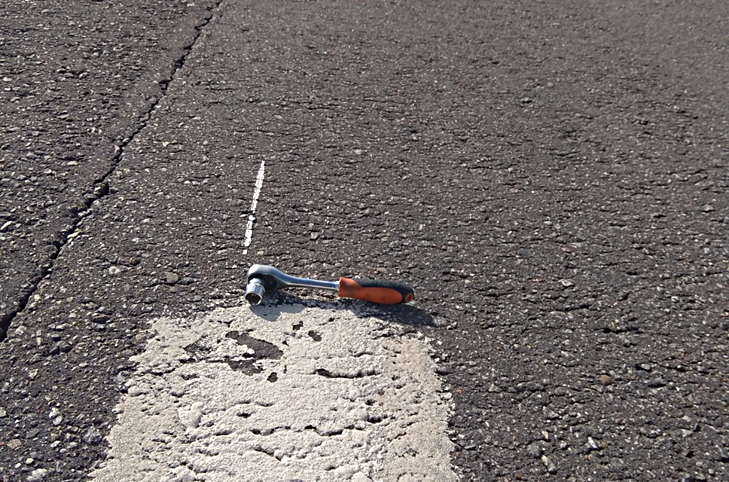
Wrench as foreign object debris on the runway for radar testing
FOD radar successfully detected the entire set of uncalibrated foreign objects. This additionally confirmed the technical characteristics of the equipment and its applicability to detect various FOD targets. Scanning speed of 1.2 miles (2000 m) per minute enables real-time data collection thus expediting identifying FOD sources and facilitating fast runway clearing process.
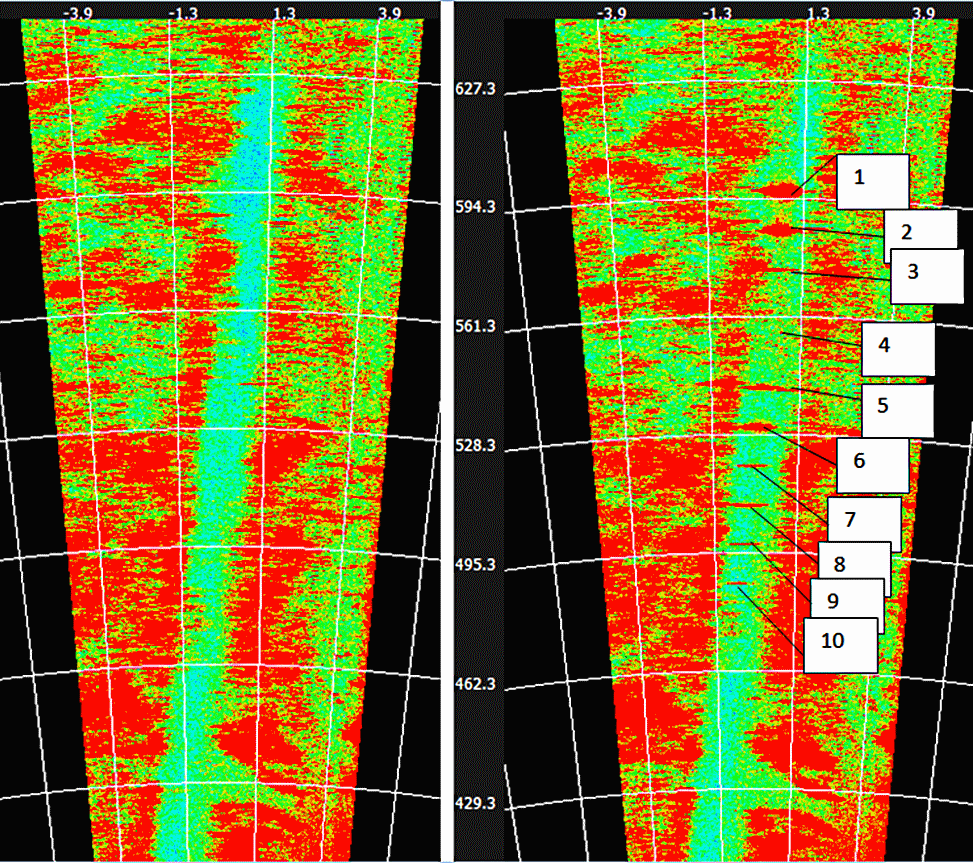
FOD radar screen detecting set of 10 non-calibrated targets (left – empty runway, right – with FOD targets)
Company-developed FieldScanner software was used at the field experiment. It is simplified version just to determine various targets on the runway on the screen, including the reference cylinder, and thus confirm the fact of detection of foreign objects debris. This test software is intended only to answer the question “If the radar detects the target or not” (i.e. is the signal from the test target higher than the noise level). In the test software, the image is not cleared of false targets, such as reflections from the surrounding soil, patches, seams and potholes on the runway.
The industrial runway control software for this radar is being developed on the basis of Artificial Intelligence (Deep Learning), and after the deployment of the system at the airport, such software should go through a training mode on runway. After training, the software becomes able to identify potentially dangerous objects and separate them from false targets, such as runway marking lights, bumps, seams on the coating, etc.
The advantages of the tested 76 GHz FOD radar include its low operational cost, low emission transmitter, and range distance up to 0.6 mile (1,000 m) to cover up to 1.2 mile (2,000 m) of the runway at 180° scanning left to right. This 2,000 m range is longest in the industry and brings sufficient advantages to FOD detection projects. Just one FOD radar is enough to serve the regional airport runway of at least 1,829 m in length for aircrafts weights below 90 tons as Airbus 319, Airbus 320 or Boeing 737-800. Two FOD radars can serve a runway in many international airports.
The successful field trial experiment of 76 GHz FOD radar at the airfield has confirmed that this radar is a promising candidate to enhance safety against foreign object debris to avoid a critical incident in the airport runways.

For any inquiries regarding 76 GHz FOD radar please email sales@elva-1.com
